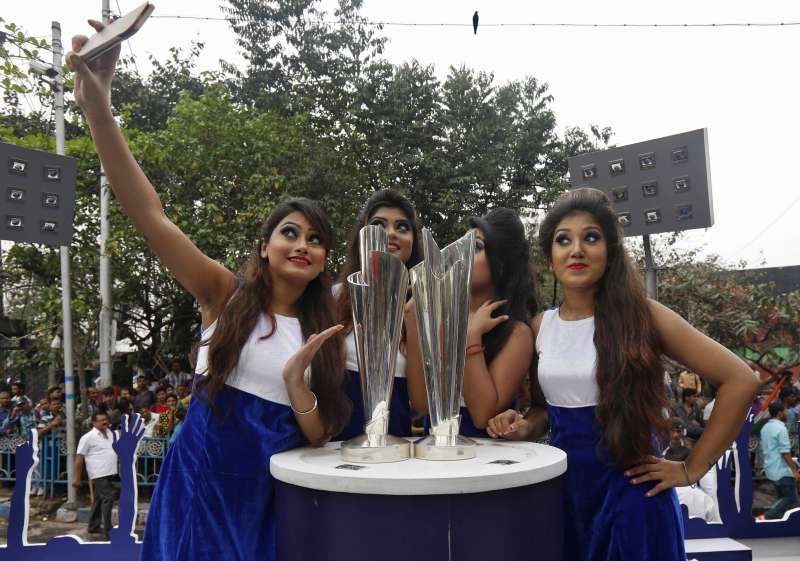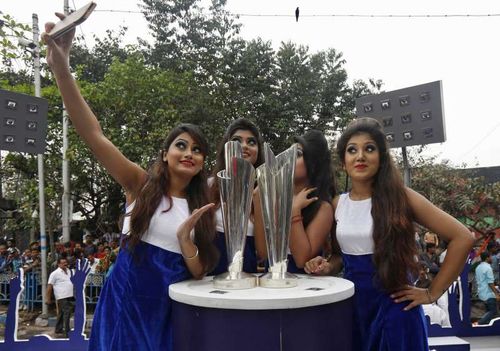
Flat pitches, big bats to test World T20 pacemen

By Ian Ransom
MELBOURNE (Reuters) - The combination of India's flat pitches and cricket's most trigger-happy batsmen is certain to produce some torrid moments for fast bowlers during the World Twenty20.
Pacemen have rarely been the stars of the T20 show, a format which tends to have master-blasters like Glenn Maxwell and AB de Villiers hog the headlines as they smash cricket's sacred balance between bat and ball out of the park.
Feared fast men like South Africa's Dale Steyn have complained T20 threatens to turn pace bowling into an anachronism, pointing to the riches lavished on those who can reverse sweep rather than conjure reverse swing.
The statistics at the last World T20 in neighbouring Bangladesh make grim reading for quicks, with four of the five top wicket-takers spinners. Unheralded Netherlands seamer Ahsan Malik was the surprise exception.
With T20 permitting only one bouncer per over, compared to two allowed in one-dayers, fast bowlers have long complained they are operating with one hand tied behind their backs.
The big bats of the modern game, which can send mis-hits flying over boundaries, add further reason for them to feel aggrieved, said former India batsman Rahul Dravid.
"I think the balance between bat and ball needs to be addressed," Dravid said last year. "Scores around 160-170 make an exciting game in T20. Some rules can surely be changed."
Since none have been, much will depend on the whims of the groundskeepers at the seven venues from Dharamsala in the Himalayas to Bangalore in the tropical south.
Not all of them should prove a fast bowling graveyard, according to former Australia paceman Ryan Harris, who also played five IPL tournaments from 2009-13.
"Although they're quite flat to bowl on, slow and low, most of the wickets are really good one-day and Twenty20 wickets," Harris told Reuters.
Mohali, in the northeastern state of Punjab, may even offer something for Australia's seamers who play group matches there along with New Zealand, Pakistan and the hosts.
"Mohali actually had a bit of grass and actually reminded me of an Australian wicket," Harris said. "That was probably the best one in relation to conditions close to what I was used to."
DECISIVE IMPRINT
Fast bowlers have not won the World T20's Man of the Series in its five editions but a few have made a decisive imprint.
Sri Lanka's explosive Lasith Malinga leads the all-time wicket-takers with 38 while other yorker specialists have made notable cameos.
Pakistan quick Umar Gul was the first bowler to notch a five-wicket haul when he destroyed New Zealand with 5-6 in a devastating three-over spell in England in 2009.
He summarised the art of T20 fast bowling simply.
"You have to be able to bowl the yorker, bouncer and the slower ball," he said.
Quicks who can execute such variation consistently, while not losing their heads when being blasted to all corners of the ground, are most likely to prosper in India, Harris said.
They will hope to do the bulk of their wicket-taking in the first few overs or face serious punishment later in an innings.
"Getting wickets with the new ball is important," said Harris. "It can last a few overs or six overs. As a bowler you've got to accept that you're going to get hit but to slow the run-rate you've got to take wickets.
"You've got to make sure that early on, although you bowl different lines and lengths to certain players, you've got to give yourself a chance to get as many opportunites to get them out."
They also need to charge in with at least two deliveries in mind and then execute based on the slightest movement of the batsman at the crease, he added.
"It seems unfair at times, the batsman can turn around and slog it left-handed where a bowler can't come in and bowl left-handed.
"But they're things the bowlers are thinking about, trying to get that step ahead."
(Editing by Greg Stutchbury)